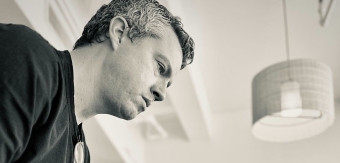Jo Barnard, Founder of the London-based design and innovation consultancy Morrama, explores a couple of lingering topics from purpose month.
Design Thinking for Social Impact: Solving Real-World Problems with Creative Solutions
In low-income countries keeping vaccine records for newborns is a crucial challenge – particularly in areas experiencing conflict, extreme poverty and/or limited access to routine medical care. Existing solutions such as vaccine cards assume a certain level of literacy and are at risk of getting lost or damaged, plus can be easily forgotten when the time comes to visit a clinic or medic.
We sought to address this challenge by working alongside stakeholders with experience in the International Aid sector and immunization specialists from Africa. This led to us thinking outside the box to creating the Vactraca necklace (see header image) – a fashion accessory that doubles up as a vaccine tracker. The lightweight pendant has seven discs, each representing a stage in the infant’s early life at which vaccines are administered. It also offers a way of documenting which vaccines are required and when.
The necklace is low-cost to create and intuitive to use – vaccines are simply checked off with a ballpoint pen at each milestone. It’s also an item that women would be happy to wear –something they may not buy for themselves and so are much more likely to keep with them. By thinking creatively to design a medical solution that resonated with mothers in a unique way, we were able to create a product that helped address a major social issue.
The Role of Empathy in Design: How Understanding Others Can Drive Purposeful Creativity

Designers have good imaginations. It’s their role to come up with unique, creative solutions to a brief. So it’s very easy to jump straight into designing when presented with a brief. It’s also easy to make assumptions about an audience – and assume that just because you think something is a good idea, others must too. But designers should understand the need for empathy, and factor this into their process. This entails doing everything they can to put themselves in the shoes of the target user.
Empathy was crucial to our process last year when designing the Kibu headphones – a circular pair of headphones for kids. We knew we had to stand out in the market and demonstrate that good quality headphones can also be both sustainable and educational. We didn’t simply want to design a pair of headphones that met the growing need of consumers looking to shop in a more environmentally conscious way. Instead, we sought to understand the needs and wants of parents through getting out and speaking to them. And from there the real design requirements were established.
Sustainability will always be a crucial part of designing a new product. But having headphones that you know are safe for your child’s ears is a must. And being able to daisy chain the headphones so both your kids can listen from the same device, is a lifesaver.
It’s important not to impress your own design preferences on others and consider what really matters to them. It might not be sexy, or make a great story, but it may well be the difference between a nice product and one that really resonates with customers.





